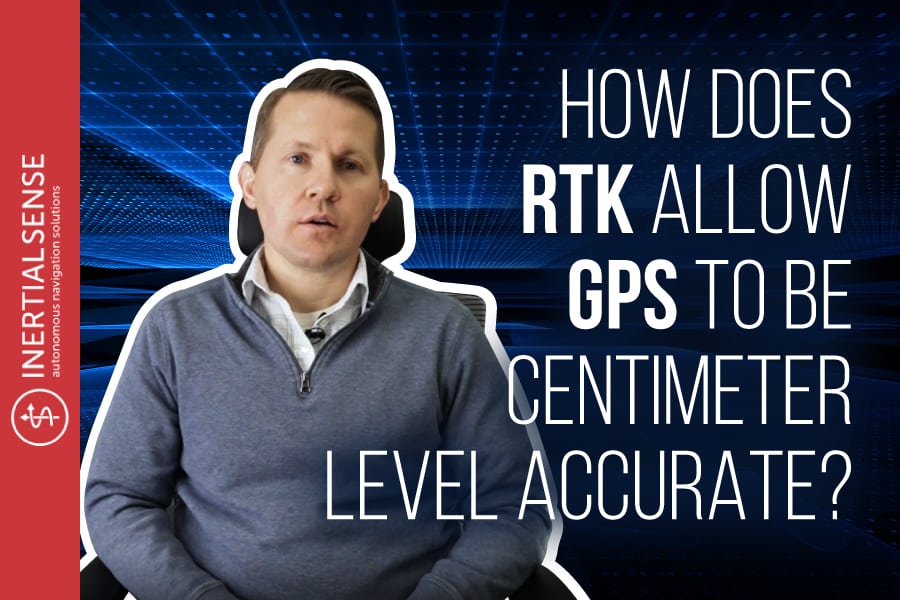
How Does RTK Provide GPS with Centimeter-Level Accuracy?
We all want as accurate information as possible when it comes to data and pinpointing location. And it is possible. Watch the video below as Walt explains how RTK can allow GPS signals to provide centimeter-level accuracy.
RTK stands for real-time kinematic. It takes a correction service from an already surveyed GPS base station and applies that correction to the rover or the moving GPS system. It is then able to correct for atmospheric distortions and any errors in the existing GPS system. This changes your data information from meter-level accuracy positioning to centimeter-level accuracy and positioning.
Because the GPS system is triangulating itself off GPS signals from moving satellites in free space, the satellite signal is traveling through great distances of atmosphere. These distances of atmosphere affect the speed at which the signal arrives at the GPS receiver.
The position estimate is critical to the timing of these signals. Weather conditions and time of day are just a few factors that can affect the signal. Because the atmosphere changes and the time of arrival changes on each of those signals, the actual position estimate will vary.
Air is also a factor in the GPS signal themselves. RTK then takes a correction from a surveyed known location that is in relatively close proximity to the rover. This can be up to 20 miles. It then applies that correction to account for these atmospheric distortions and errors. You now have a better understanding of how RTK provides GPS with centimeter-level accuracy.
Learn More:
What Is RTK and Why Do I Need It?
Dual Compassing L1/L2 Multi-Band GPS with INS Development Kit + RTK Capable
Everything You Need To Know About Global Navigation Satellite System Units (GNSS)
Video Transcript
So RTK stands for real-time kinematic. What it means is that it’s taking a correction service from a surveyed GPS base station, applying that correction to the rover or the moving GPS system. It’s able to correct for atmospheric distortions, and errors in the existing GPS system. Which is what brings it down from meter-level accuracy to centimeter-level accuracy and positioning.
Because the GPS system is triangulating itself off of these GPS signals from moving satellites in free space, the satellite signal is traveling through great distances of atmosphere. And those distances of atmosphere affect the speed at which the signal arrives at the GPS receiver.
The position estimate is critical to the timing of those signals. But because the atmosphere changes and the time of arrival changes on each of those signals based on the weather conditions, time of day, there’s a lot of factors, then the actual position estimate will vary. There’s error as a result of…it’s kind of like having a fuzzy tape measure, where your mark isn’t very clear and it’s just simply you can’t read it.
There’s also air in the GPS signals themselves. So what RTK does is it takes a correction from a surveyed known location that is in relatively close proximity to the rover, which can be up to 20 miles. And it applies that correction to account for these atmospheric distortions and errors.

